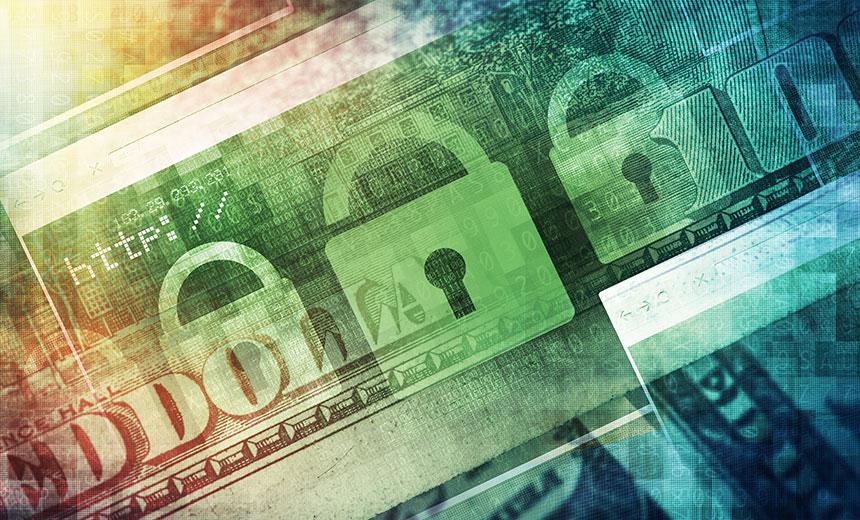Stablecoins, the second-to-last buyers of U.S. Treasury bonds
Original Title: “May 2024: Stablecoins are helping create a buyer of second-to-last resort for US Treasurys”
Author: Kunle
Translation: Deep Tide TechFlow
A long time ago, I was a bond and forex trader. During US Treasury auctions, I remember we would discuss a question every few months: "What is China's bid?" This referred to whether the People's Bank of China (PBOC) would be a buyer in that auction. Looking back, I can't even remember if this really affected any of the auctions I observed, but the insight I gained was that perhaps one day the PBOC would not buy at an auction, and by then the US Treasury might find itself in trouble.
I only thought about this again recently when I saw the chart below (translator's note: the red bars in the chart represent the amount of stablecoins used to purchase US Treasurys):

For the source of the chart, please refer to here .
You don't need to strain your eyes to see what this indicates. The crypto world may have inadvertently designed a system that could potentially strengthen the dollar's status as a reserve currency. Here are the reasons.
Bitcoin maximalists often mention:
- The US government (and most governments) is borrowing too much and printing too much money.
- This behavior is stealing wealth from the future.
- Ultimately, this behavior will lead to hyperinflation, devaluing the dollar.
- When this happens, the dollar will free-fall.
- Therefore, holding Bitcoin is a hedge against points 1 to 4 above.
Personally, I believe that due to the dollar's status as a reserve currency and other factors (for example, there isn't much liquidity that can compare with the dollar market, so if your operational scale is certain, the dollar is unavoidable), the dollar's performance relative to other currencies is strange, but I don't really understand these dynamics well, nor am I particularly deep into them.
Additionally, another macro perspective I've gathered from business news is:
- The world is becoming increasingly multipolar / less integrated every day.
- For this reason (and some others), China (and possibly some other governments) is less interested in holding US Treasurys (thus buying more gold), which also partly explains why the spot price of gold is at historical highs while ETF gold holdings are declining.

While I don't have strong arguments to explain why this macro theme is occurring, many data points suggest it is real. However, I believe cryptocurrency has caused another interesting phenomenon to occur, which is actually a balancing act. Fundamentally, the demand for dollars from non-US individuals and businesses far exceeds the supply. For non-US individuals, the dollar is often a more stable savings method than their local currency, which is difficult to access through local banks. For non-US businesses, about 40% of cross-border trade is still settled in dollars. Wealthy individuals in most developing countries typically transfer their excess savings to the US / UK / Europe. Cities like London, Vancouver, and New York reflect the demand for dollar-denominated assets in their real estate markets. Non-wealthy individuals in developing countries find it difficult to obtain dollars, and this demand has been building up for decades. I have discussed this issue before.
Stablecoins in Emerging Markets
The "digital gold" narrative of cryptocurrencies (i.e., cryptocurrencies can hedge against inflation, and their permissionless nature allows consumers to protect their wealth from being confiscated by local governments) is more real for stablecoins (cryptocurrencies pegged to reserve currencies like the dollar) than for Bitcoin. Furthermore, given that the largest proportion of fiat-backed stablecoins is supported by the dollar, stablecoins are not particularly useful for US citizens as an inflation-hedging tool.
In a country with poor currency management, a person might theoretically hold Bitcoin for speculative purposes at some point. However, so far, Bitcoin's volatility has made it unsuitable as a store of value because when you really need to use Bitcoin, you can't be sure how much value it will provide you. In other words, in emerging markets, ordinary people do not have enough excess savings to withstand Bitcoin's volatility for emergencies. This makes Bitcoin a very expensive and inefficient means of storing value in the short term. In contrast, before the emergence of cryptocurrencies, wealthy individuals in poor countries holding foreign currencies (usually dollars, pounds, or euros) as a savings mechanism was quite common (and still is). As a market maker, I have always thought (and still think) that a good heuristic for judging a country's economic development trajectory is, "Where do the wealthy in that country put their wealth?" Wherever the wealth is being sent (for example, if your country's action after becoming wealthy is to immediately buy real estate in New York or London), it signals that citizens fear their wealth will be taken away, whether through explicit confiscation or indirectly through money printing.
Governments dislike this because it creates natural selling pressure on their local currency and makes assets somewhat out of reach. However, fiat-backed stablecoins pegged to the dollar or euro (actual managed assets) are permissionless and are effectively beyond the local government's ability to prevent you from purchasing them, serving as a digital asset alternative to existing real use cases. Before stablecoins emerged, you had to buy dollars from a bank and keep them in a bank account (which has its advantages), but banks could also:
a) Refuse to sell them to you;
b) Charge you high fees for purchasing/holding;
c) Be forced by the government to trade at false exchange rates or limit the amount you can purchase or hold.
Even in today's environment, if you are in the US, you should try going to a local US bank or logging into your Chase mobile app and attempting to buy some euros; you will find how unsupported that is.
Basically, everyone around the world wants to obtain a relatively stable currency to price their savings, a currency that has a predictable exchange rate compared to the goods and services they purchase daily. For most people today (2024), the dollar and euro are more stable than their local currencies. Stablecoins backed by the dollar (or pound, euro, whichever you choose) provide a permissionless way to do this. The loudest voices in the cryptocurrency space have no incentive to tell you this because USDC won't make them rich. Ironically, stablecoins actually help address runaway hyperinflation situations, while Bitcoin merely allows users to exchange the volatility of cryptocurrency for the hyperinflation of their local currency. This does not mean Bitcoin is useless; it just means that if you really need to access your savings when you least expect it, Bitcoin is a poor savings method.
The Strangest Unintended Consequence
Stablecoins are turning retail investors / citizens / savers around the world into implicit buyers of US Treasurys. Here are the reasons:
Stablecoins allow people outside the US to hold dollars in a permissionless way that their governments cannot control and their banks will never easily provide, and (in some cases) earn interest in USD. The poorer you are, the harder it is to obtain dollars. And this is just the beginning—stablecoins are just starting to be used for non-crypto use cases, such as replacing SWIFT transactions and other cross-border SME payments (which is what Bridge does). I can only imagine that as the use of stablecoins offline expands, demand will continue to rise.
Well-managed stablecoins must essentially hold the most stable + liquid securities, which are essentially US Treasurys. For example, as of February 2024, most USDC holdings are in US Treasurys + repos + cash:

Therefore, the demand for Treasurys is growing linearly due to the demand for stablecoins themselves.
This essentially means that about 90% of the demand for stablecoins will somehow lead to demand for Treasurys.
From a strange perspective, buying stablecoins as a layer of Treasurys is almost easier than buying the Treasurys themselves. A threefold increase in stablecoins would make them one of the top five holders of US Treasurys. Therefore, the growth of cryptocurrencies will help support the dollar's status as a reserve currency for the next generation, which is not crazy.

The Implications of These Trends Continuing or Accelerating
If these trends continue, we can think of some potential implications.
First, given that stablecoins are largely backed by Treasurys—there are some interesting contagion scenarios we have not experienced before. For example, if retail holders attempt to collectively redeem, the hyperinflation event that cryptocurrency propagators fear could undermine the stability of stablecoins and affect the broader cryptocurrency market.
Similarly, we may encounter a "dollar de-pegging" event, where stablecoins can be traded around the clock, but since the underlying Treasurys are not traded around the clock, stablecoin managers may not be able to produce real dollars quickly enough (this could manifest as a decoupling, leading to stablecoins trading at a discount in panic, such as USDC trading at 85c during the SVB crisis). Such events could not only impact the cryptocurrency market but also affect the category of money market funds.
It is hard to say how this will play out, as the widespread growth of stablecoin usage, particularly the growth of institutional adoption of cryptocurrencies, will also change the mechanisms of asset transfer. In times of crisis, the correlation between assets is often much higher than we think during peacetime, and at the current scale, when we find out how it happens, it has already happened.
Second, the Treasury bonds held in stablecoin form are widely distributed to retail investors, and the "managers" of stablecoins monetize part of the margin compared to Treasury bonds held by foreign central banks, making it much less likely to weaponize Treasurys. As stablecoins grow and hold more US Treasurys, the likelihood of them being sold off en masse during times of conflict and negatively impacting the US government's financing ability decreases, as retail investors / savers around the world are less likely to express their preferences by selling stablecoins (even if they are against the USD), because their currencies may also be volatile, and because for stablecoin managers, earning yields is how they make money (for example, Tether earned $1 billion in 2023 from Treasury yields), so unless there is a redemption, they have no intrinsic motivation to sell.
Conversely, the decoupling between the US and China and the related adjustments in capital flow structures are often seen as detrimental to the dollar's dominance. However, the emergence of stablecoins runs counter to this trend and may ultimately strengthen the dominance of the dollar and Treasurys. This is entirely due to considerations of liquidity and network effects; as fiat-backed stablecoins grow, their liquidity will also increase (the liquidity of the dollar will increase accordingly), and as more individuals hold dollars (or dollar-like assets), the dollar's position will become increasingly unshakeable.
Third, the "flight to quality currency" trades during times of conflict tend to favor reserve currencies (mainly the dollar in recent decades), but historically, this shift among institutional investors has been most pronounced (partly because most market activity is institutional and partly because retail investors find it hard to access bonds). In a world where retail investors can easily access dollars (through USDC / USDT), the emergence of retail "flight to quality currency" trades is not crazy; retail investors globally will shift from a) cryptocurrencies and b) their local currencies to USDC, as this is the first time they can do so.
Finally, there are certain risks associated with emerging economies ceding monetary policy / sovereignty to their local individual savers. Capital controls are a tool that governments often use to combat currency devaluation, and if your citizens can directly purchase USD against CAD / AUD (USDC / USDT), it becomes much harder to do so. This means that if fiat-backed stablecoins continue to be adopted by more and more people, governments will eventually start to build some tools into their toolkit to at least track their citizens' adoption and use of stablecoins, thereby keeping their capital controls effective.










